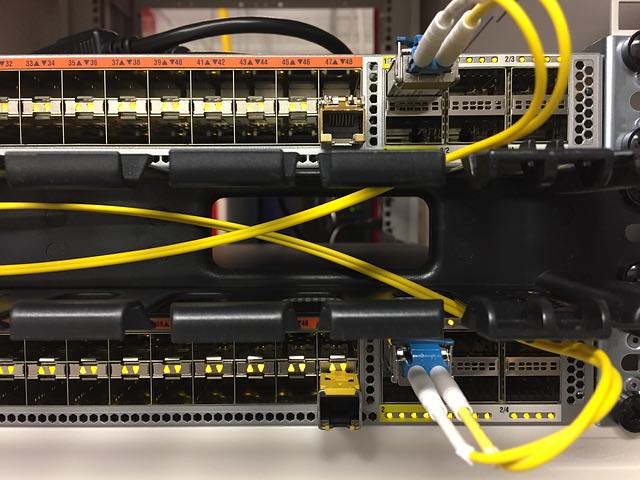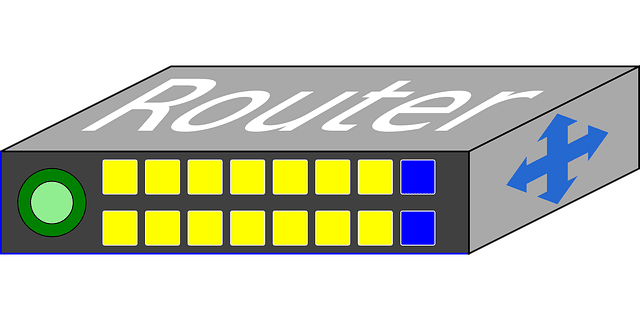
Access to your router panel for 192.168.10.1 clicking on Login button (192.168.l0.1)
Contents
General information
The objective of this section is to show the general information regarding the gateway to the network, as well as the access data to customize the network.
Credentials information
The access credentials consist of the username and password that is required to access the modem’s administrator panel, or to customize the network configuration.
The default credentials to access are the following:
• Usernames: user, admin and root.
• Passwords: user, admin and root.
Basic configuration information
Through this IP address, you can access the network settings, with which you can access various services, including firewall settings, parental control, network monitoring, among other network features.
Some of its main properties are the following:
- Type of IP address – Address for local use
- Private gateway addresses – 192.168.10.0 and 192.168.10.254
- Address usage: Default address for the network administrator panel, and the access point. Not exclusively, therefore it can be assigned as a host address.
- Broadcast IP address: 192.168.10.255
- Well known brands of devices: Some of the better known brands of modems are: Comfast, DLink, Intracom, Toshiba, Motorola, Winstar, Medialink.
- Most common write error: 192.168.l0.1
Advanced configuration information
Access points have the characteristic of managing the transmission of information between the various devices on the Network, among which various policies can also be assigned, for example IP address filtering, firewalls, routing, monitoring, etc.
In addition, various processes within the access point can be customized, as well as the way to manage the transfer of information. Here are some key features that can be managed on your access point.
Setting up a firewall at 192.168.10.1

Filtering traffic within a Network is of utmost importance, since there are always attacks from outside and errors that could potentially put the security of your Network at risk.
Fortunately, there are various solutions to increase the security of the internal network, including the use of a firewall to filter incoming and outgoing traffic, as the first line of defense for attacks from outside.
Some of the options for establishing a firewall within the access point are as follows:
- Modem firewall: As access points, modems contain software from the factory to filter network traffic.
- The modem’s internal firewall varies in terms of filtering options according to its model, however the characteristics are similar in terms of allowing and denying traffic to certain network addresses.
- It is good to deny the traffic of IP addresses that are not known within the Network, and also to whitelist those IP addresses that are trusted.
- Free software: For the access point, various firewall solutions can be configured, both at the perimeter level and within the network.
- Iptables: Simple and robust solution for Linux and Unix environments that allows filtering of the IP addresses or range through its policies of allowing (ALLOW), denying (DENY) and rejecting (REJECT).
- For example, to allow all traffic on the access point, we execute the policies in command or script:
- iptables -A INPUT -s 192.168.10.1 -j ACCEPT
- iptables -A OUTPUT -d 192.168.10.1 -j ACCEPT
- Where INPUT refers to all incoming traffic and OUTPUT to all outgoing traffic.
Advertisement - Fail2ban: Helper tool widely used to add rules on demand for the firewall. It is not a firewall as such, however it helps to add filtering rules, especially in a network that is exposed to attacks all the time.
- Establishing network filtering rules is extremely important to prevent attacks from outside, or to establish various policies for monitoring, auditing or any other type of control over the various devices that connect to the Network.
Troubleshooting – 192.168.10.1
In this section we show you some of the common connection problems, as well as other problems that exist when accessing the network administrator panel.
Connection errors
Connection errors are the most common problems when trying to access the access point or network configuration, they usually have multiple causes and can sometimes be difficult to diagnose.
Some of the most common connection problems are:
Physical connection errors
The physical connection errors of the network consist of a direct failure of connectivity between the access point and the device or host, that is, a satisfactory connection that allows communication between both devices is not allowed.
Some of the solutions to this problem are as follows:
- Verify that the access point (or modem) is correctly connected to the Internet line and to the electrical current.
- Verify that the ADSL and Internet LEDs are on.
- If the access point is configured wirelessly, check that the Wi-Fi (WLAN) led is on.
- If the access point is wired (or via Ethernet), verify that there is a continuous cable between one of the access point’s ports and the target device.
- If the device connects wirelessly, check that it is connected within the same network (or SSID) as the modem.
No access to 192.168.10.1
If the device is correctly connected to the modem or access point, it is possible that the failure is directly related.
To verify that the failure is related to that IP address, we can do a series of tests to identify if this is the real problem.
- Verify that the IP address of the access point is correct, the simplest way to identify it is to open an Internet browser browser and type that address. If there is a satisfactory answer, then the access point is located at that address, otherwise it will be necessary to investigate if the access point address is not located at another IP address, for example 192.168.1.254 Advertisement
- Verify that the IP address is correct and does not fall within any of the common errors:
- Common errors: 192.168.l0.1, 192.168.10.l, 192.168.lo.l, 192.168.l0.l, 192.168.lo.1, 192.168.1.1, 192.168.101, 192 168.10.1, 192 168. l0.1, 192 168 10 1, 192168101, 192168l01, 192 168 l0 1, among many other common forms of common misspellings for this IP address.
Wrong password
The default configuration for accessing the access point is usually set by the manufacturer for all modems, its own brand, for example, a common username and password or one that allows users to access the network.
Some of the most common usernames and passwords are found within the credential information section for 192.168.10.1 and could change according to the brand of device, however the default passwords are those.
Within the Network administrator panel, it is possible to change the password for the modem and the Internet, for example it is possible to add a password not only to access the network, but also to access the administrator panel.
Within the access point the new password is used as WPA2, WPA-PSK or WEP KEY to access the network. In some cases it is also possible to change the SSID of the network.

Communication errors
Although there is communication between the access point and the various devices on the network, it is possible that there are failures, which prevent the network packets from being transmitted correctly between them.
Problems with the public IP address
The problem may lie from the public IP address that is located within the access point, and is visible from anywhere on the Internet.
If the problem is within the public IP address, it is important to remind the user that many ISPs configure their IP addresses dynamically, that is, they could change according to certain parameters or circumstances defined by the provider, for example certain times. or WAN configuration conditions.
If you want to configure a service or web server that makes use of the public IP address, it is important to take these changes into account and it is better to always do it from the designated private IP address to avoid any problem of change of IP address derived from the provider. Either establish services of local scope configured with a private routing or routed with a translation mechanism such as NAT.
More IP address problems
Even though a local configuration does not fail at the access point level, because the manufacturer has installed various services so that the modem allows access to users within certain configuration parameters, it is possible that some problems may arise with new services , or even restricted by network or firewall policies.
Private IP addresses can be assigned statically or dynamically. The address settings are typically in the range 192.168.10.0 and 192.168.10.254. Any IP address outside this range usually has connection problems, unless the routing is configured correctly.
Connectivity tests on 192.168.10.1

How to diagnose connection problems?
To diagnose network connection problems, a series of various tests can be performed to validate if the devices have a successful connection to the access point, and also to the Internet.
Some of the tools used to identify possible connection problems are the following:
- Ping: Tool that stands out for its simplicity to test the connection or range to various devices, or access points. Its syntax is very clean and only consists of writing ping and the IP address or domain to which we want to test the connection.
- Examples:
- ping 192.168.10.1
- ping 192.168.10.254
- The way to test the connection is displayed directly on the screen through the reception of network light packets.
- Another advantage of using ping is that it runs directly from the console and is compatible with virtually any operating system including Mac, Windows, and Linux.
- Note: If the address is written incorrectly, it generates an error, for example in the case of:
- ping 192.168.l0.1
- Examples:
- Traceroute: If we need to verify the route through which Network packets are transmitted, traceroute is the best option, since it shows us how the packet moves through various communication channels from the origin to the destination device or website.
- If we want to validate that there is a connection with the access point with traceroute, we simply execute the command to see the path that it follows through the network, regardless of the physical devices by which the network is made up, including routers or switches.
- Examples:
- traceroute 192.168.10.1
- traceroute 192.168.10.254
- Note: If the address is written incorrectly, it generates an error, for example in the case of:
- traceroute 192.168.l0.1
192.168.10.1 Router Brands
When you delve into the vast realm of home networking, certain IP addresses like 192.168.1.1 or 192.168.0.1 might ring a bell. However, 192.168.10.1 is another noteworthy address that may not be as popular but is equally crucial. Serving as a default gateway for several routers, this private IP address helps users access their router’s administrative settings. This article takes you through some of the router brands that use 192.168.10.1 and their significance in the networking domain.
1. Medialink
- Legacy: Medialink, under the umbrella of Mediabridge Products, offers a selection of routers that cater mainly to the domestic market.
- 192.168.10.1 Usage: A significant chunk of Medialink’s routers uses
192.168.10.1as their default IP address, providing users with an interface to manage settings.
2. Amped Wireless
- Legacy: As a key player in the long-range wireless industry, Amped Wireless specializes in extending Wi-Fi coverage areas.
- 192.168.10.1 Usage: Several Amped Wireless devices, especially range extenders, utilize this IP address for their default settings access.
3. HooToo
- Legacy: HooToo, known for a diversified range of electronics, offers portable routers ideal for travel and compact setups.
- 192.168.10.1 Usage: HooToo’s travel routers predominantly use
192.168.10.1as their access point for administrative configurations.
4. RAVPower
- Legacy: While RAVPower’s primary acclaim comes from its line of power banks and charging devices, its venture into the router space, particularly travel routers, has gained attention.
- 192.168.10.1 Usage: RAVPower’s travel routers default to
192.168.10.1, enabling users to tweak settings on-the-go.
5. Sabrent
- Legacy: Sabrent, a company widely recognized for its accessories, also dips its toes in the networking sphere with compact routers.
- 192.168.10.1 Usage: Sabrent’s compact routers generally align with this IP address for default administrative access.
6. Motorola
- Legacy: Motorola, a global telecommunications heavyweight, has a select lineup of routers and modems.
- 192.168.10.1 Usage: While many Motorola devices use different default IPs, specific models, especially those tailored for niche markets, may be preset to
192.168.10.1.
Conclusions
As you could see through this document, there are many ways to configure and diagnose network problems. However, various services can be configured, including web servers, en route policies, address translation, among other features that are outside the scope of the current document.
192.168.10.1 might not be the most renowned IP address in home networking, but it stands as a linchpin for many users accessing their device configurations. Recognizing the brands that utilize this IP can be beneficial, especially during setup or troubleshooting scenarios. Always consult the device’s manual or official resources if you’re unsure about the default IP, ensuring smooth and hassle-free networking experiences.
However, it is good that you can take them into account for any of your projects using the content of existing networks in Isproto’s posts.
Another languages